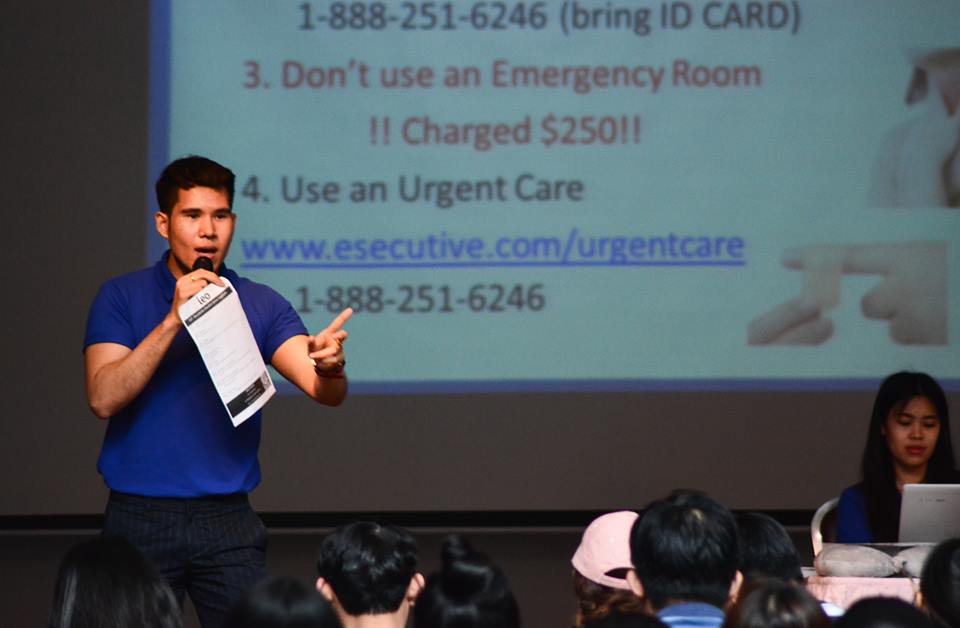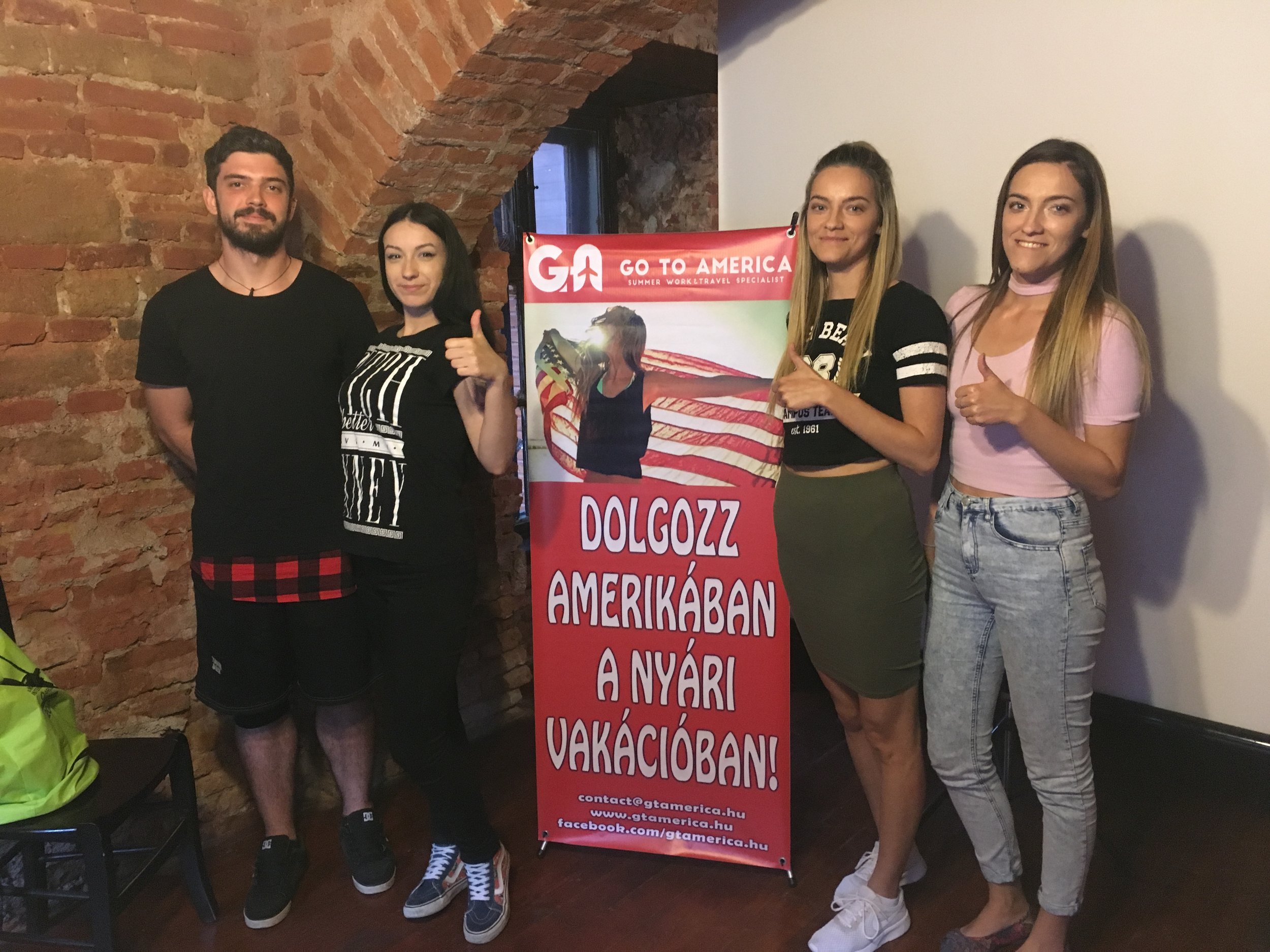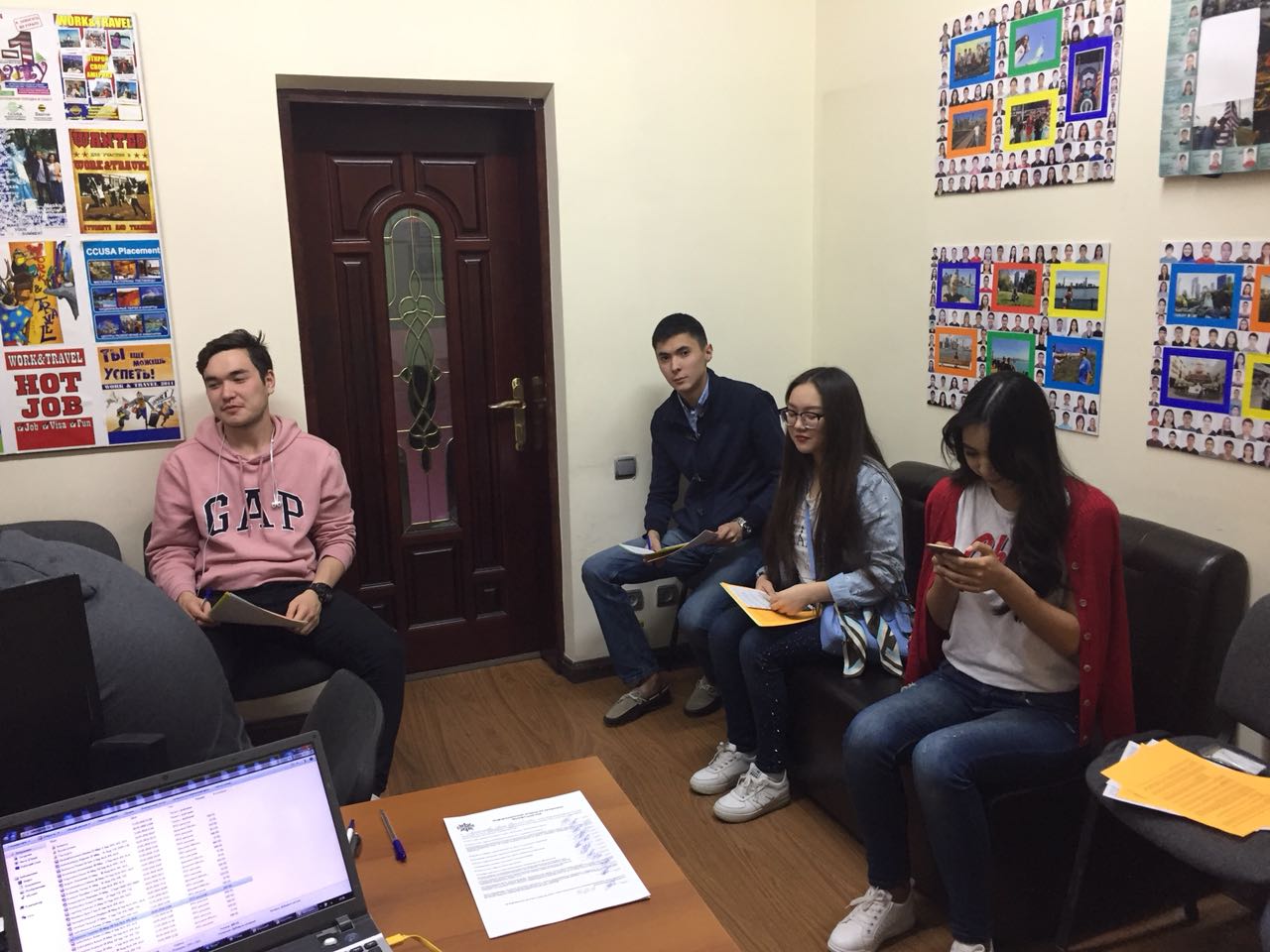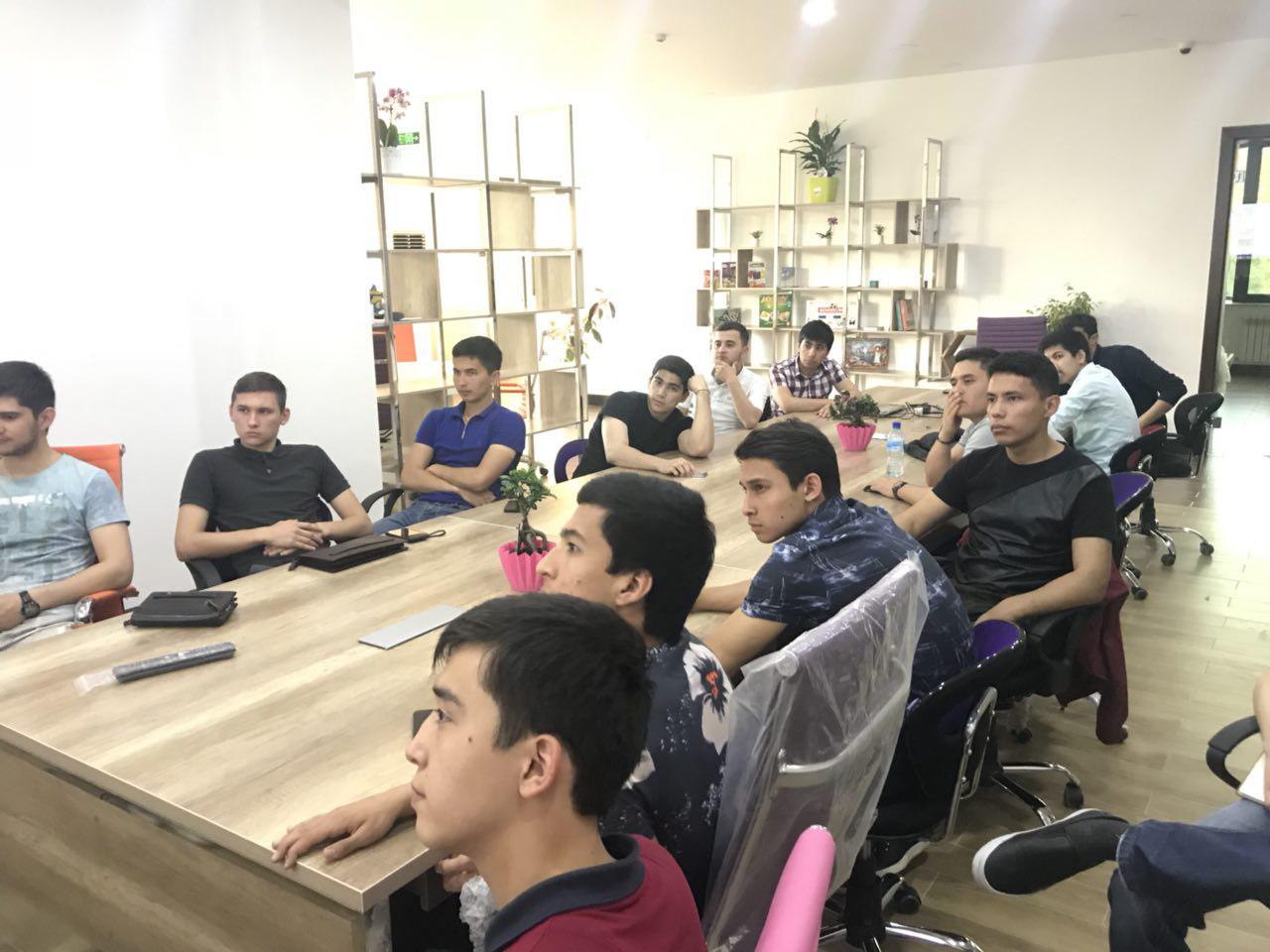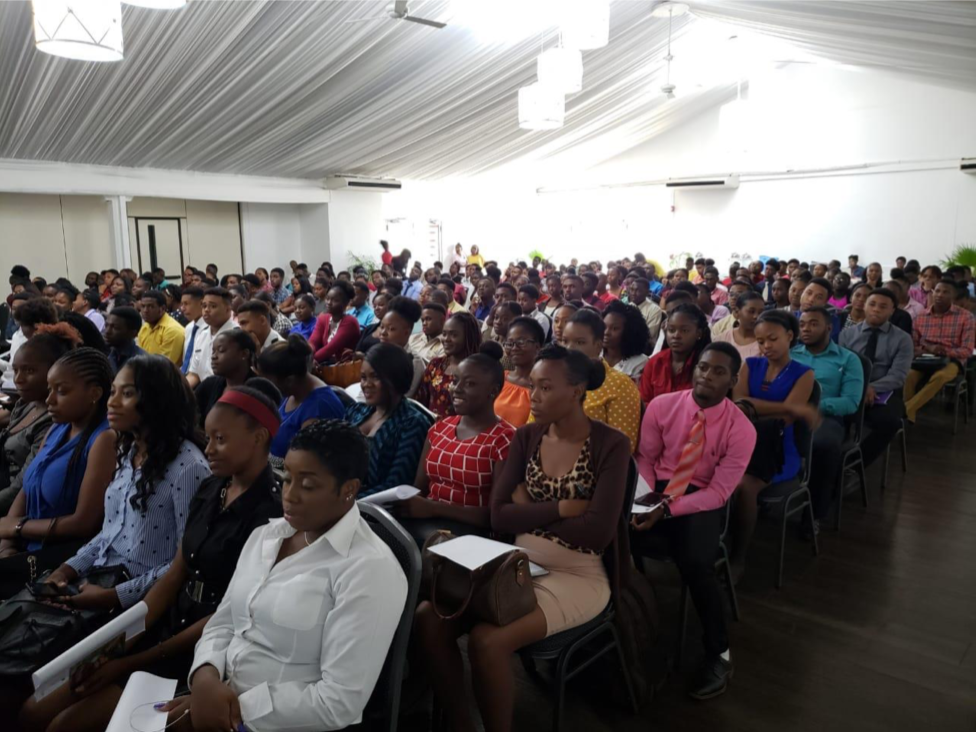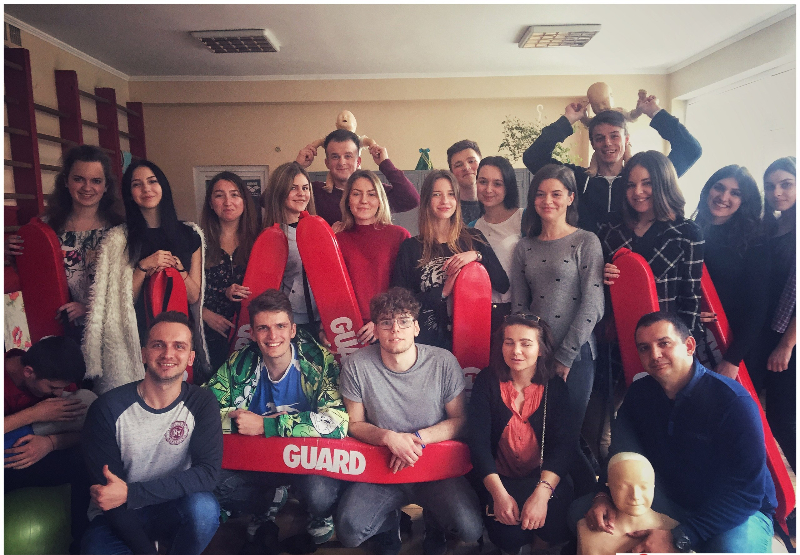Pre-Arrival Orientation Guide
The agent shall provide all applicants with an in-person or live online pre-arrival orientation, using the materials provided by ERDT. The orientation is designed to give a good basic knowledge of U.S. culture and the nature of the program in which they are participating.
Previously you have indicated to ERDT the date of your Pre-Arrival Orientation. The following items and information are due to ERDT by the first Friday following the Pre-Arrival Orientation:
Applicants must complete the Pre-Arrival Orientation section of their application;
Proof of insurance/card for each student (scanned copy) must be uploaded into their application; and,
At least 10 photos or screenshots of the orientation, showing all ERDT students, should be uploaded into our shared Dropbox folder.
ERDT will cancel the DS-2019 form of any applicant for whom the above documents are not received on time.
Only applicants who are able to attend the orientation live should be recruited for the ERDT Work & Travel program. In rare situations, an agent may elect to provide a separate in-person orientation for applicants who are unable to attend the large orientation, but this must occur by the first Friday following the main Pre-Arrival Orientation with the required materials completed the same day. Any applicants who have not attended an in-person orientation by the first Friday following the main Pre-Arrival Orientation will be canceled.
You must bring:
Insurance card for each participant
Copy of ERDT Participant Handbook for each participant
A method of displaying the Orientation Slide Show
A camera, to take the 10 required photos
Recommended: Bring some past participants to speak about their Work/Travel program in the U.S.A.!
Students must bring
Their job offer
Their housing plan
Covering The U.S. Government Required Topics
The following topics are required by the U.S. Department of State. Prepare to point out these topics in the ERDT Participant Handbook, and the students’ job offer and housing plan, as well as the ERDT website, if you wish.
A description of the Work/Travel Program and its purpose;
DOS Exchange Visitor Program Toll-Free Help Line, Participant Letter, Program Brochure and Wilberforce Pamphlet;
Emergency instructions, including ERDT’s 24/7 Help Line, how to use 911 and disaster preparedness;
Rules that the participant is required to follow;
Information about travel & entry into the U.S.;
Information about housing and transportation;
Social Security Application procedures;
The terms and conditions of participants’ jobs;
Information regarding the requirement that participants notify ERDT within 10 days of a housing address, email address or phone number change;
Information regarding the procedure for students to request a new or additional jobs;
Information explaining the cultural component of the Summer Work Travel Program;
Information regarding the circumstances in which participants’ programs must be terminated;
Fees that ERDT receives;
Costs/living expenses that the exchange visitor will incur in the U. S. ;
The home-country physical presence requirement;
Information on health care and insurance;
Life and customs in the U.S. ;
Local community resources (public transportation, medical centers, libraries, recreation centers, banks); and,
Information on Federal Minimum Wage requirements;
Job Details
Instruct students to take out their job offer, and read it carefully. Have them inform you if they do not understand all of the below:
Their hourly wage;
How to contact their employer before arrival;
The duties they can expect to perform;
Any details regarding overtime;
Their expected arrival date;
All items they are expected to bring to the U.S. for their job;
How much money is due to the employer upon arrival (for materials, uniform, testing, housing, etc.)
Communicating with ERDT
Participants must check their email within 24 hours of arrival in the U.S. and complete the instructions in their Arrival Email. This tells ERDT that they are in the U.S.
Within 1 week of arrival, they must return to www.erdtworkandtravel.org and complete the section, SEVIS Step 2. This serves as their Post-Arrival Orientation.
ERDT will send participants a Monthly Monitoring email every 30 days after their arrival date. Participants must check email once a week and respond to all emails from ERDT within 1 week. It is very important that students ensure:
Emails from noreply@erdt.hanovercrm.com and emily@erdtworkandtravel.org do not go to spam
That the email address on their application can be used in the U.S., on the device(s) they are bringing
Participants must inform ERDT within 1 week if they change their housing address. Any time students report their address to ERDT (when validating or updating SEVIS, or if reporting a new address via email) they must include their apartment number, unless they are in a house. They may not list a P.O. Box number or an intersection.
In the event of an emergency, participants may call ERDT at 800-321-3738, and follow the prompts to connect to the ERDT Help Line, which is a mobile phone carried at all times by ERDT Work & Travel Program staff.
If participants feel they are not getting the help they need from ERDT, they should call the U.S. Exchange Visitor Hotline, 1-866-283-9090.
Arrival in the U.S.
You must ensure that participants have a good, safe plan from the time they arrive in the U.S. until they have begun working, and are living in their permanent housing:
They must have ERDT's phone number, 1-800-321-3738 or 310-450-4624, accessible while traveling.
Any medications must be clearly labeled.
They must pack copies of their documents in their checked luggage, and keep their documents very safe during travel. IF A STUDENT LOSES HIS/HER J1 VISA BEFORE APPLYING FOR SOCIAL SECURITY, HE/SHE CANNOT BEGIN WORK AND MUST RETURN HOME.
They must understand how to successfully pass through U.S. Customs & Immigration. U.S. Immigration will look at their DS-2019 form and may question the students if they are arriving on an inappropriate date, or if they do not have tickets booked to the city or town where they will work.
They must have pre-planned transportation all the way to their job site. For safety reasons, we highly recommend a domestic flight to their job site over Greyhound. Students’ items can easily be stolen on Greyhound if they fall asleep, for example.
They must have communicated with the employer about exactly when and how they will arrive at the job site.
If participants will not move immediately into permanent housing, they must have a pre-planned place to stay (hostel or hotel) temporarily until they are in permanent housing. Remember that cheap accommodations can be unsafe, and that items can easily be stolen if participants fall asleep in a bus station or airport. If students have questions about whether the pre-planned temporary accommodations they have found are safe, just contact ERDT and we will be happy to help.
They must understand that in the first 2 weeks after arrival, they will have many expenses associated with arrival, and they may not receive a paycheck from their employer. So, they must be able to easily access at least 1000 USD upon arrival, expect that they may spend it all in these first 2 weeks, be patient over these 2 weeks, and notify ERDT if they have any concerns or need help.
Housing
Instruct students to take out their housing plan, and read it carefully. Tell the students to inform you if they do not understand all of the below:
What to expect in terms of paying rent
How much they will likely spend on rent, housing deposit, utilities, transportation and supplies BEFORE receiving their first paycheck
What rooms are in their housing, and how the beds / room sharing are situated
What is included? Cooking pots and pans? A stove or oven? Bed sheets and bath towels? Toilet paper?
Housing must be safe, legal, and affordable. Students should only sign a lease or housing agreement if they understand all of the details. They should contact ERDT if they have any questions or concerns, before signing the lease or housing agreement (even if it is with their employer). Once they sign a lease, it is legally binding.
If their employer provides housing, ERDT has checked to ensure that the weekly rate students pay is comparable to other seasonal housing in the area. Remember that seasonal rent is higher than permanent rent. It may be that the employer pays, for example, $800 a month for a 3 bedroom apartment, but collects a total of $1200 per month from the 6 students who live there. This is because sometimes an employer has to pay for a 6 or 12 month lease, even though they only will have students living there for 3-4 months. They also often cover the cost of furniture, utilities, cleaning, maintenance and other costs.
Students must inform ERDT within 1 week if they change their housing address. If they do not, their program will be terminated.
If there are any problems with housing - broken appliances, leaks, minor mold, bugs, etc, they should first contact their landlord or housing provider. If they cannot get it fixed, if they need further assistance, or cannot reach their landlord or housing provider in the case of an immediate emergency, they should contact ERDT.
Transportation
Transportation must be safe and reliable. We expect students to find and use these options, and not to risk their safety to save money or time on housing or transportation (for example, hitchhiking, or biking/walking in unsafe conditions, or taking a short unsafe route when a longer safer route is available). There are 4 basic options for transportation:
Walking - Ensure students know how long they are willing to walk to walk to and from work (in miles). It may be hot and they may be tired from work. They should not walk along a busy street that has no sidewalk, or alone at night, ever.
Bicycling - Ensure students know where they can purchase a bicycle, and how much it will cost. They should not be riding along a highway or road with a high speed limit. Bicycle accidents are the #1 way that J1 students are injured or die, every year. Unfortunately, motorists in the U.S. cannot always be trusted to drive safely around bicycles. Go through the Bicycle Safety page in the ERDT Participant Handbook.
Public transportation - Ensure that public transportation runs as late or early as students work, and that students understand the cost.
Employer-provided transportation (shuttle, carpool) - Students should check their job offer to see if the employer provides transportation, and the cost.
Any students who cannot a safe, reliable and affordable way of getting to work should first contact their employer for assistance, then ERDT.
Applying for Social Security
2 business days after students have validated SEVIS, they should travel to their nearest Social Security office with the below items:
Application For A Social Security Card (Form SS-5) or reference number from online application
A letter, which they can download from their account at erdt.hanovercrm.com
Passport, with J1 visa and DS-2019 form inside
A print-out showing the I-94 number. Participants should print this document after they arrive in the U.S. To do so, visit this website: http://www.cbp.gov/travel/international-visitors/i-94-instructions Click on "Get I-94 Number Now," then click "Yes" at the bottom, then fill out the information. A page will come up, click "Print" and print this form.
We recommend that students list their employer address on the Form SS-5 as it may be more reliable than their housing address in the beginning.
Check out our Social Security page for a list of questions we get frequently.
Students who already have a Social Security card / number do not need to apply again. Students who have lost their Social Security card can get a replacement by visiting the Social Security office or completing an online application.
Medical Care and Insurance
ERDT requires Home Country Agents to provide insurance for participants. All participant insurance policies must meet, at minimum, all of the following DOS guidelines:
a. Underwritten by an insurance corporation having an A.M. Best rating of “A–” or above, an Insurance Solvency International, Ltd. (ISI) rating of “A-i” or above, a Standard & Poor's Claims-paying Ability rating of “A–” or above, a Weiss Research, Inc. rating of B+ or above, or such other rating as the DOS may from time to time specify; or
b. Medical benefits of at least $100,000 per accident or illness;
c. Repatriation of remains in the amount of $25,000;
d. Expenses associated with the medical evacuation of the exchange visitor to his or her home country in the amount of $50,000; and
e. A deductible not to exceed $500 per accident or illness;
f. Does not unreasonably exclude coverage for perils inherent to the activities of the exchange program in which the exchange visitor participates;
g. Covers participants for their entire program.
At the orientation, please give all students their insurance cards or ensure they have received them electronically. This card should show their name, insurance company and policy number). Instruct them to put the insurance card in their wallet, and keep it in there until they have finished their Work & Travel Program and come back home.
They will need to show this card when seeking medical treatment, and that if they lose this card or document, they must immediately contact you for a new copy in case they have a medical emergency.
Inform students that medical insurance doesn't mean that all services are free. Tell them about any deductibles or fees they may have to pay.
Have students check their insurance card dates and ensure they are covered for their entire trip in the U.S., including the grace period. If they are found to be in the U.S. without insurance, their program could be terminated.
Students should understand the difference between the 4 main types of health care facilities:
Doctor's Office The insurance probably has a list of specific doctors (also known as Primary Care Physicians) that can be used for a low cost or no cost. This can be less expensive than Urgent Care if there is time to make an appointment - for example, to get medicine for a cold or rash that won't go away, or to get a refill on a prescription, or for a minor infection.
Walk-In Clinic Work & Travel participants would most commonly use a Walk-In Clinic for services that are not covered by their insurance, such as vaccinations, pregnancy tests or getting a prescription for birth control, or getting a physical exam (for sports, for example). They will need to pay for all services at Walk-In Clinics. However, the cost would typically be lowest at a Walk-In Clinic. Care is offered on a first-come/first-served basis. They do not take appointments.
Urgent Care Urgent care is probably the most typical health care facility for Work & Travel participants, who are likely to face urgent non-emergencies such as sudden illness or allergic reaction, or a minor accident (broken bone, non-life-threatening cut). The cost may be higher than with a doctor's office. Urgent care is usually open evenings and weekends, unlike a doctor's office. Work & Travel participants should know where an urgent care center is in the community, before they come to the U.S.
Emergency Room The Emergency Room should only be used when a student believes his/her life may be at risk (trouble breathing, chest pain, severe bleeding, trouble maintaining consciousness). Students will often face large financial penalties for using the Emergency Room for a non-emergency. Please read this article on when it is appropriate to use the Emergency Room.
Getting hurt at work When ERDT approved each employer, we checked to be sure that every employer has Worker's Compensation insurance. Worker's Compensation is the insurance that covers workers anytime they are injured at work, even if it was due to a mistake they made. If a participant is injured at work, they must report the injury to their employer immediately and ask for a claim form. After they have done this, or if the employer will not give them a claim form, they should contact ERDT immediately. It is illegal for the employer to refuse to give them a claim form, or to fire them for having an injury at work.
If a participant is injured outside of work and cannot work If a participant cannot work due to an illness or an injury that happened outside of work, ERDT can allow the participant to stay in the U.S. for 3 weeks to try to recover and start work again (provided they can afford housing without working). Under law, an employer can fire a worker who is injured outside of work and cannot work. Participants may still use the grace period to travel (if a grace period is allowed by the U.S. embassy in your country).
Life and customs in the U.S.
In this section, you are the expert! What are the differences between your country and the USA? We encourage you to bring past participants to your orientation to help with this. Please give a description of how the following aspects of life are different between your country and the U.S. If you need any help, contact ERDT.
Weather
Time (Americans are very punctual, particularly for work)
Social events (parties, dates)
Personal hygiene (shower every 1-2 days, use deodorant, use toothpaste / dental floss / mouthwash 2x daily, dispose of toilet paper in the toilet)
Courtesy (saying "please," "thank you," "you're welcome," "I'm sorry," walking on the right, waiting in line).
Friendliness (for example, people in the U.S. often smile and say "Hello" to strangers).
When to say "excuse me" - for example, if you have bumped into someone, if you need for someone to move, if you need someone's attention, if you have sneezed, coughed, or burped (or worse! :-)
Safety and crime, including identity theft.
Following The Law
Remind students to familiarize themselves with laws in their state and city. In many cases, the punishment for breaking a law can be more serious for a J1 participant than for a U.S. citizen.
Laws regarding alcohol & drugs The legal limit for drinking in the U.S. is 21 in all states. Drinking in public is not allowed. While marijuana use is legal in some states, it is against U.S. law.
Laws regarding drunk driving (legal limits vary by state; punishment is severe)
Laws regarding sex Remind students that sex with someone under 18 or sex with someone who is drunk and unconscious can be considered rape, punishable as a serious crime.
Laws regarding shoplifting ERDT once had a J1 Work & Travel student in jail for several weeks for shoplifting cosmetics. Most stores have cameras, security devices and security guards.
Laws regarding biking and walking A police officer may issue a ticket to someone who is riding a bicycle on the sidewalk or walking across the street without being in a crosswalk, for example.
Laws regarding housing In most areas there is a time beyond which you cannot make too much noise. Also, most areas have a limit on how many people can live in an apartment.
Libraries and community centers
Work & Travel participants typically use libraries primarily for free internet! Books and periodicals (magazines and newspapers) are also available at the library.
Libraries and community centers often also offer opportunities for things to do, such as classes and social activities. You can also find bulletin boards at most libraries listing things like classes, activities, social groups, even housing, jobs and items for sale.
Prohibited jobs
Instruct participants that they have been approved to do the job listed on their job offer. If the employer changes their tasks or duties, ERDT must be informed. Work & Travel students may never:
Work more than 4 hours between 10 pm and 6 am.
Do any job requiring full or partial nudity;
Do any job requiring them to touch another person for an extended amount of time (piercing, tattooing, massage, manicure, clinical or patient care) or come into contact with body fluids (blood, urine);
Do any job requiring a license;
Do any job involved with gambling;
Work as a teacher or camp counselor;
Work at a private home, employed by the homeowner (In child care, elder care, gardener, housekeeper, chauffeur, personal assistant);
Buy inventory and then sell it.
Take a positions with a traveling fair, or concessionaires;
Drive a vehicle, pedicab or rolling chairs, or ride on a motor vehicle outside the cab;
Chemical pest control, warehousing, catalogue/online order distribution centers, agriculture, forestry, timber or logging, fishing/hunting, mining/quarrying, oil/gas extraction, construction, manufacturing, wrecking/excavation/demolition, shipbreaking, roofing, forest fire fighting/ prevention, slaughtering, meat/poultry/fish packing/processing/ rendering;
Operating a saw-, lath-, shingle- or cooperage stock-mill; power-driven woodworking, hoisting, metal forming, punching, shearing, bakery or paper-products machines; balers; compactors; operating circular-, band-, chain- or reciprocating-saws, guillotine shears, wood chippers, and abrasive cutting discs; in occupations involving exposure to radioactive substances and to ionizing radiations or close proximity to explosives;
Positions at worksites that have experienced layoffs in the past 120 days or that have workers on lockout or on strike;
Non-seasonal positions, or any positions where participants would displace U.S workers
Working for a staffing company that does not provide full-time, on-site primary supervision of the participants.
Minimum Wage
Each participant should know how much they are making at their job, as listed on their job offer. This must be more than minimum wage in their state. ERDT has previously checked to ensure participants are making at least minimum wage. To find out what minimum wage is in their state, they can just do an internet search for "Minimum wage in Virginia," for example. Every participant should be making at least the federal minimum wage, listed at https://www.dol.gov/general/topic/wages/minimumwage
If they are doing a job where they are not technically making minimum wage (for example, working in a restaurant where they receive tips, or being paid for each room they clean), their employer must ensure that their earnings still total at least minimum wage for the hours they work.
Cultural Activities
The employer has planned at least 2 cultural activities for participants, and ERDT expects participants to attend.
All students must participate in cultural activities in the U.S. This can include:
Completing the ERDT Cultural Scavenger Hunt;
Going to a museum or historic site;
Attending a concert, show, or theater event;
Participating in holiday celebrations such as a picnic or fireworks;
Sightseeing in a nearby city;
Going to an amusement park, fair or carnival;
Attending a party, picnic or dinner at an American's home
ERDT will ask students, monthly, to describe what cultural activities they have done in the past month.

